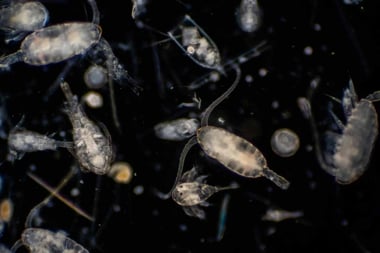
The ocean glitters in the wake of the magnificent white cruise ship while you wine and dine at sumptuous buffets and then dance the night away in a starlit ballroom. Cruise lines promise decadence and opulence. But there is a darker side to the story.

During a typical one-week voyage, a large cruise ship (with 3,000 passengers and crew) can generate 210,000 gallons (795,000 L) of sewage, one million gallons (3.8 million L) of grey water (wastewater from sinks, showers, and laundries), more than 130 gallons (492 L) of hazardous wastes, eight tons (7,258 kg) of solid waste, 25,000 gallons (95,000 L) of oily bilge water, and air pollution from diesel engines at a level equivalent to thousands of automobiles.
An absolute ban on dumping untreated sewage from ships over 400 tons within twelve nautical miles takes effect September 2006. Violators will face fines up to $1 million and possible jail time. There are now requirements for ships to filter oily bilge water to prevent discharge and to keep records for operations involving oil, chemicals, sewage, or garbage. Ships will be obliged to undergo certification to prove that they meet requirements relating to oil, chemicals, sewage, air emissions, and antifouling paints.
Blowing It Out the Stacks
Low-sulphur fuel is available to limit air pollution, but some cruise ship lines claim there are safety and insurance factors that reject its use. According to Tom Dow, vice president of Princess Tours:
- Flashpoint (minimum temperature at which liquid fuel gives off a vapour and ignites) of the low-sulphur fuel is significantly lower than that of the fuel that ships normally use. Given the enormous amounts of fuel carried by cruise ships, and its proximity to thousands of passengers and crew, it’s too dangerous.
- Low-sulphur fuel is not endorsed by the engine manufacturers and is considered a “no-no” by Lloyds of London, which insures many ocean-going vessels.
On the other hand, according to Robert Barlow Cash, Canadian environmental manager for ADM Agri-Industries, the flashpoint of biodiesel is higher than regular diesel, at 149 C compared to 47 C for regular diesel. A higher flashpoint means safer storage.
Biodiesel is 10 times less toxic than table salt and degrades as fast as sugar, an attractive benefit for marine applications. Low-content biodiesel blends in the range of 1 and 2 percent, mixed with regular diesel, allow for the use of low-sulphur diesel, because biodiesel greatly improves lubricity, a critical feature lost in low-sulphur diesel.
Meanwhile, on the Poop Deck
With the growth in cruise ship activity along the BC coast and plans for port expansion, the provincial government’s port strategy is being watched carefully by the opposition critic for ferries and ports, MLA for the North Coast, Gary Coons.
Coons expressed his concerns in the 2005 legislature: “I would hope…that your ministry works with the [federal] Environment Minister and links the second great goal of environmental concerns into the port strategy.”
Enforcement of the new antipollution laws for the cruise ship industry in Canadian waters should go a long way toward alleviating some of Coons’ concerns while they help clean our waterways and protect our environment.




